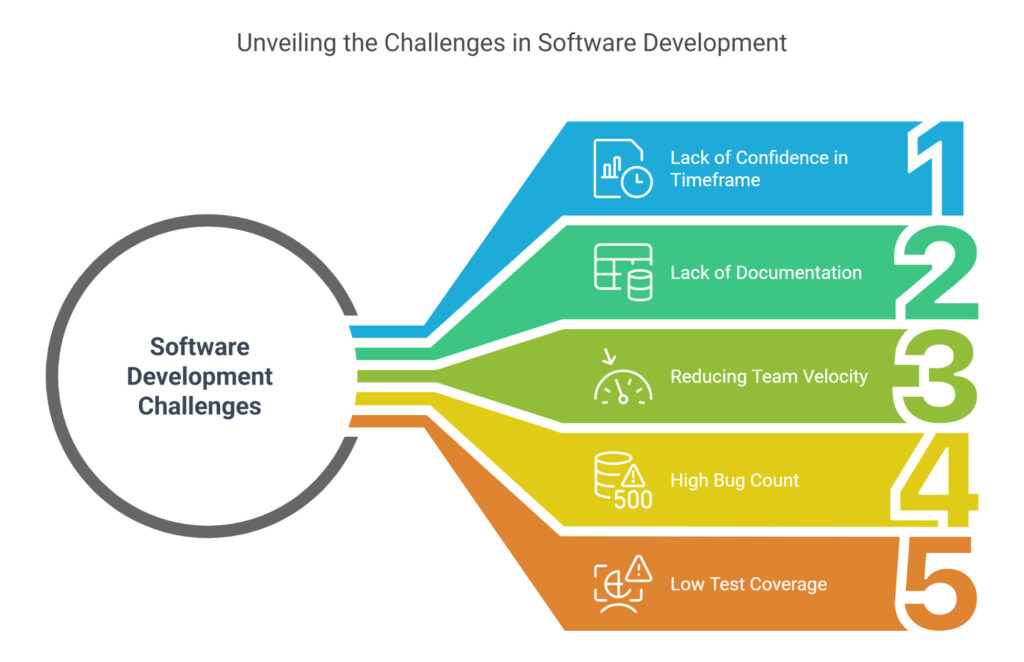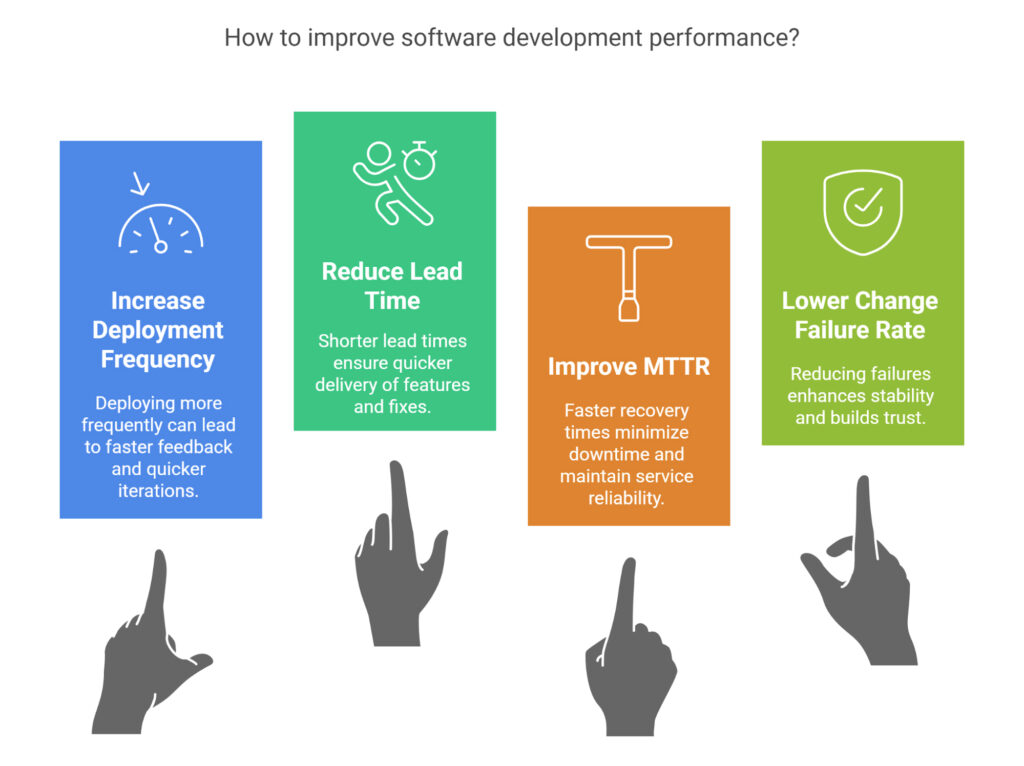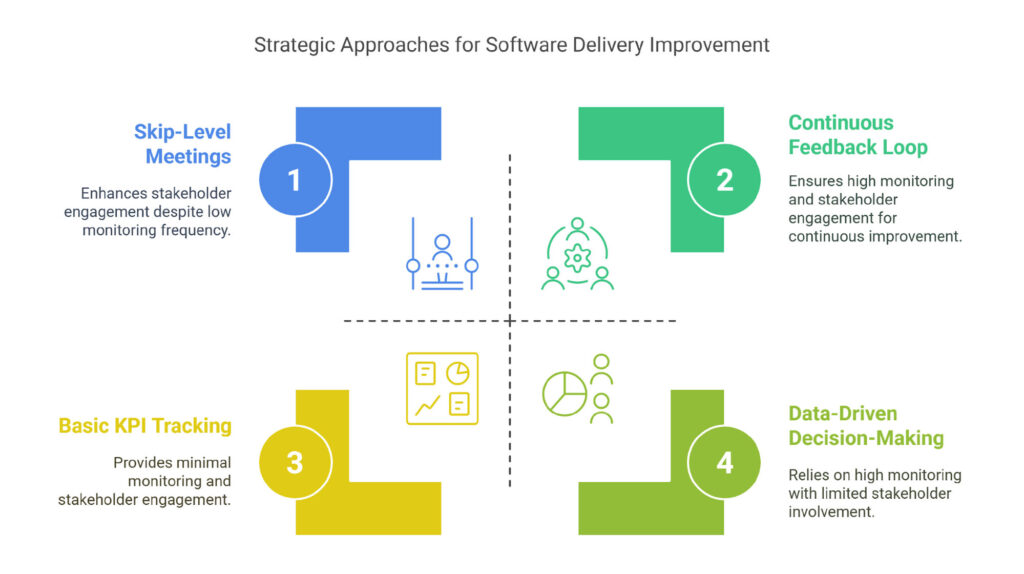Identifying risks early in the software development lifecycle significantly improves delivery outcomes. While executives may not be involved in the technical details, it’s critical they stay alert to signals that indicate delivery issues. Using KPIs and software delivery metrics, leadership can proactively detect and respond to risks before they escalate.
What are warning signs?
Executives don’t need to dive into code to recognize something is wrong. Delivery problems often manifest as observable patterns in team output, timelines, and product quality.

1. Missed Deadlines
When timelines are always shifting, it’s a clear sign the team is struggling to stay on track.
- Key milestones are regularly delayed.
- Release dates are often rescheduled.
- Teams don’t feel confident in hitting their targets.
- Sprint estimates are usually too optimistic.
2. Lack of documentation
If important details aren’t written down, knowledge stays locked with individuals, slowing everything down.
- System architecture isn’t documented clearly.
- Code lacks helpful comments.
- There’s little sharing of technical knowledge.
- New team members take a long time to onboard.
3. Progress slows down sprint by sprint
A consistent drop in output may point to deeper workflow or morale issues.
- Fewer story points are completed each sprint.
- Work that’s planned doesn’t get finished.
- Team members seem stressed or disengaged.
- Blockers remain unresolved across sprints.
4. Bug reports start piling up
When bugs start to outweigh new features, quality takes a hit, and so does delivery speed.
- Critical issues show up right after release.
- Fixes take longer than they used to.
- Bugs are reopened often.
- The backlog of issues keeps growing.
5. Testing gets skipped or overlooked
Without solid testing, the risk of failure increases, and so does support overhead.
- Key features don’t have enough test coverage.
- Automated tests are missing or unreliable.
- Releases happen without proper testing.
- Testing environments are flaky or broken.
KPI and metrics for software delivery performance enhancements
Warning signs can be observed in the early stages by monitoring and tracking software development KPIs and metrics.

- Deployment frequency: How often code changes are deployed to production. High-performance teams do deployments multiple times per day.
- Lead time for changes: The time it takes from committing code to that code being deployed in production.
- Mean time to recovery (MTTR): The average time it takes to restore service after a production failure.
- Change failure rate: The percentage of deployments that result in a failure in production.
How do we reduce warning signs?
In order to improve the software delivery process and reduce delivery problems, strategic approaches have to be followed.

Making a data-driven decision-making system
- Metrics like sprint velocity, bug count, code quality metric, and customer satisfaction score should be monitored to make a data-driven decision-making system.
- Clear KPIs for software development need to be given to teams with proper tracking mechanisms.
- Set threshold values for KPI to indicate early warnings.
Make a regular demonstration culture
- This means a feature can be called completed only if the feature can be demonstrated.
- Business stakeholders can join sprint reviews and participate in a continuous feedback loop.
Maintain pulse check meetings
- Arrange pulse check meetings with executives and do team health surveys.
- It’s helpful for executives to occasionally meet directly with developers to understand how things are going.
Conclusion
Identifying clear KPIs is essential-not just for developers but for leaders responsible for delivering reliable software. Software delivery problems are much easier to prevent than to fix after they’ve compounded. While one or two warning signs might not seem urgent, multiple signals appearing together often point to deeper issues.
By regularly monitoring key software delivery metrics, executives can catch problems early, take informed action, and keep delivery on track.



